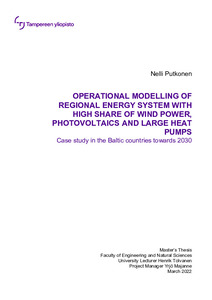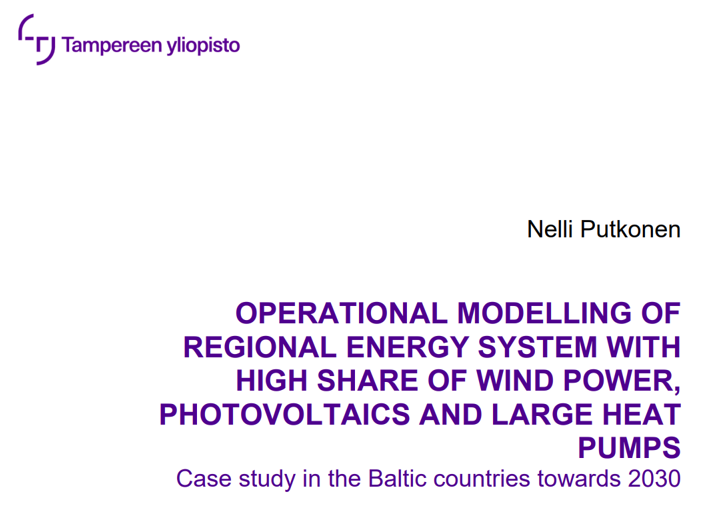
Master’s thesis part of FasTen and Amber
Nelli Putkonen's master's thesis Operational Modelling of Regional Energy System with High Share of Wind Power, Photovoltaics and Large Heat Pumps: Case Study in the Baltic Countries Towards 2030 was…
Nelli Putkonen’s master’s thesis Operational Modelling of Regional Energy System with High Share of Wind Power, Photovoltaics and Large Heat Pumps: Case Study in the Baltic Countries Towards 2030 was conducted as a part of FasTen (Fast, flexible and secure decarbonisation of the Baltic states — possible progress in the next Ten years) and Amber (Impacts of ambitious energy policy pathways) research projects for VTT Technical Research Centre of Finland. The projects have received funding from Nordic Energy Research (NER), and executed in participation with VTT, Riga Technical University (RTU), Lithuanian Energy Institute (LEI) and Tallinn Technical University (TalTech) between 2020 and 2022.

The thesis studies the features of energy system modelling and research — especially in terms of wind and solar power and large heat pumps integration — and investigates the near-term future of the Baltic system using Backbone modelling software. First, an introduction to general trends in energy systems research as well as the operational characteristics of variable generation and heat pumps is given. Then, the special features of the Baltic system, as well as state-of-the-art solutions in computational modelling of energy systems are addressed. Finally, the case study models the hourly operation of the Baltic regional system in 2030 (including power, heat, transport and building sectors) based on realization of the national energy and climate plans. The operation and indicators of the scenario year 2030 are compared with a historical model year of 2017. Additionally, the sensitivity of the 2030 system operation towards different capacities of wind power, photovoltaics and large heat pumps is investigated in a comparative analysis. Results are analysed in terms of operational decisions as well as economic, environmental and energy security indicators.

